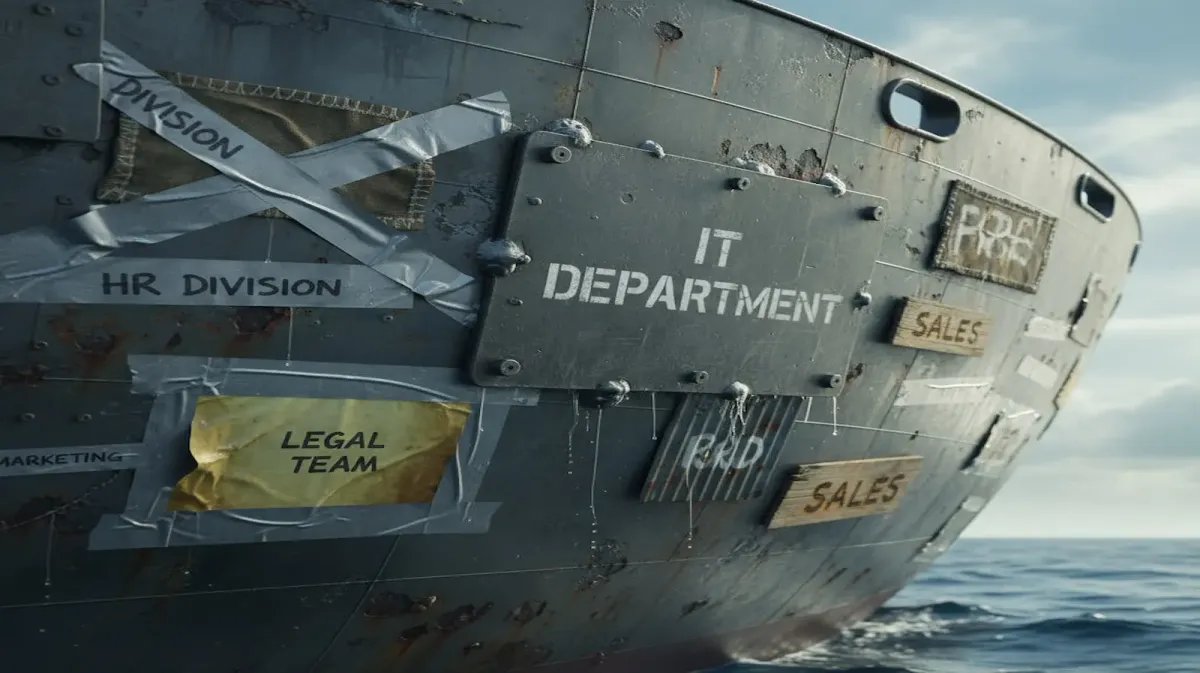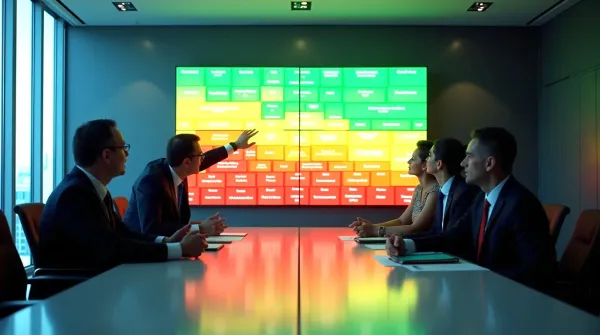A Complete TISAX® Risk Inventory by Department by Design
A practical guide to mapping TISAX® risks beyond your IT team

Table of Contents
-
Introduction
Why Most TISAX® Preparation Falls Short
The Department by Department Breakdown
How to Use the Risk Inventory Document
Final Thoughts and Call to Action
Introduction
Preparing for a TISAX® assessment can feel like trying to plug holes in a ship you did not realise was leaking. You focus all your energy on information technology. You tighten access controls, set up multi factor authentication, lock down networks. Then the audit comes and you realise your human resources, legal, and facilities teams are full of unaddressed security risks.
If that sounds familiar, you are not alone. Most companies make the same mistake. They treat TISAX® as a technical project instead of a business wide responsibility. But here is the truth. TISAX® is not just about how secure your servers are. It is about how secure your entire organisation is.
That is exactly why this article exists.
You will get a clear picture of what TISAX® auditors are actually looking for when it comes to risk documentation. Not just in your information technology team, but across every department. From human resources to sales to production. By the end, you will know where your blind spots are and how to fix them.
You will also get something you can use straight away. A complete department by department risk inventory document, fully aligned with the current TISAX® requirements. It is practical. It is detailed. And it will save you hours of work.
Why Most TISAX® Preparation Falls Short
Most organisations believe they are well prepared for a TISAX® assessment because their information technology systems are secure. They have strong passwords, updated firewalls, and access controls in place. But here is what they often overlook.
TISAX® is not just about protecting systems and data. It is about protecting your business in every area. That means every team that handles sensitive information contributes to your overall security posture. Not just the information technology team.
Auditors understand this. They will ask how access is removed when employees leave. They will look into how your suppliers are reviewed and what kind of security measures are in place on your factory floor. They will examine how your sales team manages customer data and whether your legal team includes confidentiality clauses in contracts.
This is where many companies fall short. They focus on technical controls and leave out operational risks. They assign responsibility to the information technology team but leave out human resources, procurement, legal, and executive leadership. This leaves major gaps in the risk inventory, and those are exactly the gaps auditors will focus on.
To succeed in your assessment, you need to think beyond technical systems. TISAX® is a business wide responsibility, and your approach to risk needs to reflect that reality.
The Department by Department Breakdown
When you think about information security risks, it is natural to start with information technology. But that is only one part of the picture. TISAX® assessments require you to evaluate risks across every area of your business. That includes departments you may not immediately consider, like human resources, legal, or facilities management.
The risk inventory we are sharing covers all major departments individually. For each one, it outlines specific risks, the potential impact of those risks, and which TISAX® control areas apply. This makes it easier for you to map risks directly to your own organisation.
Here are just a few examples of what is inside the document:
- Human resources
Are former employees still able to access your systems? Are new hires receiving proper security training? These are not just process gaps — they are audit red flags. - Legal and compliance
Are non disclosure agreements being tracked? Are your contracts with suppliers including the right security clauses? A missing clause could mean you are legally exposed. - Facilities and physical security
Are visitor areas controlled? Are your surveillance systems reliable? Physical risks are just as important as digital ones, and TISAX® makes no distinction. - Finance
Is sensitive financial data protected? Are your payment systems secure? Are there controls in place to prevent internal fraud? - Sales and marketing
How is customer data managed? Is there a process to protect strategic plans and pricing information? These are areas that often get overlooked but matter to auditors. - Research and development
How do you protect intellectual property and design data? Is there access control in place for prototype systems?
The full document goes deeper into each of these departments and more, including procurement, manufacturing, testing, and executive leadership. Each risk is clearly mapped to a specific control area in the TISAX® framework, making your preparation both structured and complete.
How to Use the Risk Inventory Document
This risk inventory is not just a checklist. It is a starting point for a practical, structured approach to TISAX® preparation. Used properly, it can help you identify gaps, assign responsibilities, and build a risk management process that actually reflects how your business works.
Here is how to get the most value out of it.
Start with a cross functional review
Bring together representatives from each department included in the inventory. Human resources, legal, finance, production, and so on. Walk through the relevant risks for each team. Ask which ones apply to your environment and what is currently being done to manage them.
Tailor the risks to your organisation
Not every risk in the document will apply to your business. Some might already be covered by existing controls. Others might be missing completely. Use the inventory as a foundation, then build on it based on your unique systems, processes, and structure.
Map risks to controls
Each risk in the document is linked to the relevant section of the TISAX® requirements. This helps you show auditors that you are not just listing risks, but actively connecting them to the control framework. It makes your documentation clearer and your preparation stronger.
Integrate it into your information security management system
This inventory should not live in isolation. Once reviewed and tailored, incorporate it into your risk register. Tie risks to actions, assign owners, and track mitigation efforts as part of your ongoing management process.
Review and update regularly
TISAX® is not a one time project. Risks change as your business evolves, so make this inventory part of a living document. Schedule regular reviews to keep it current.
Used this way, the risk inventory becomes more than just preparation for an audit. It becomes a valuable internal tool that strengthens your overall security posture.
Final Thoughts and Call to Action
Most organisations underestimate how far the TISAX® requirements reach. They focus on systems but forget about people. They secure networks but miss physical risks. They document controls but skip over department specific threats.
If you want to pass your TISAX® assessment and build a meaningful security foundation, you need to think beyond information technology. You need a risk inventory that reflects how your business really operates — across every function.
The good news is you do not have to start from zero.
We have created a full department by department TISAX® risk inventory that you can use as your foundation. It is structured, mapped to the latest TISAX® controls, and designed to be used by real teams in real organisations.
To get your copy of the full document, send an email to ix@isegrim-x.com and we will send it straight to your inbox.
This will save you time, reduce the risk of gaps, and give you a solid head start on your assessment preparation.




